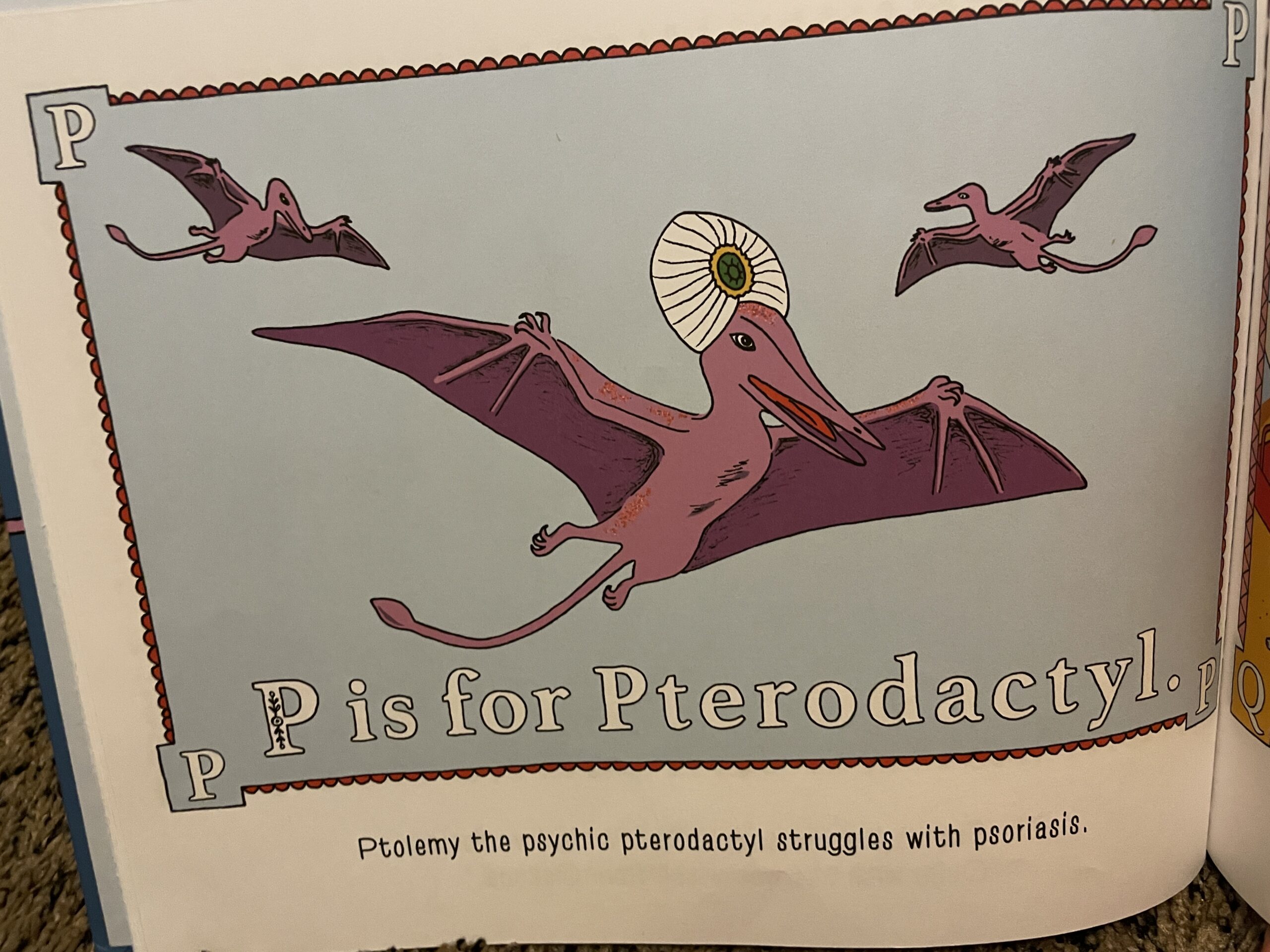Book Review
by Ashley Beecher

My dad gifted P is for Pterodactyl, by Raj Haldar and Chris Carpenter, to my children when they were a little young to appreciate it, but since then it’s become one of my oldest child’s favorites. The theme of the book is to showcase weird words that are pronounced nothing like they look.
The book follows the alphabet from A to Z and includes words that sound nothing like the letters they start with, except in F’s case where none of the words with the F sound at the beginning actually start with F!

Besides being totally wacky and fun, this book introduces a wide range of vocabulary words to your children that they might not encounter otherwise. You’d be hard pressed to find another children’s book that includes the words “aeons,” Bdellium,” “eulogy,” and “psoriasis.” Or to find some of those words in another children’s book at all.

Now, this book can be a bit difficult to read aloud, but I’d encourage you to go for it anyway. You can use the glossary included at the end to pronounce the words, but I would skip it on the first read. Here’s why: when young kids learn to read they often have trouble pronouncing new words and that can discourage them. If you read this book with them and show that sometimes grownups have trouble pronouncing new words too, they’ll see you try and learn not to give up. Plus, it’s okay to make mistakes (because even grownups do it).
You might even have an awesome discussion about ways to learn how to pronounce words (like glossaries, dictionaries, or searching the pronunciation online) as you go through the glossary in the back together so you can read the book again.
To buy this book on Amazon, click here.
Activity

Pay tribute to language by making word posters and hanging them on your wall. Discuss the meaning of each word on the posters so your child understands, then let them decorate their posters with drawings, stickers, or other objects that will help them remember.
Supplies:
Word Poster Printouts (see below for download), crayons or other coloring utensils, scissors, glue, any extra supplies for decorating (stickers, cotton balls, aluminum foil, colorful leaves, etc.)
Directions:
 Encourage your child to trace the letters in the word on each poster with crayons or colored markers.
Encourage your child to trace the letters in the word on each poster with crayons or colored markers.- On each poster your child is interested in, draw pictures relating to that word. (If your child has trouble thinking of things, we’ve provided a few pictures related to the provided word posters.)
- Add interesting elements to your poster (maybe aluminum foil for a knight’s armor or cotton ball clouds and leaves for autumn). Get creative.
- Hang the word posters where they can be seen.
Different Variations:
- For Older Children: Instead of using the word posters provided, use the blank template and have them pick some of their own words based on their interests. Write those words inside the box on the blank poster.
- Bonus: For a fun twist on this activity, find words in another language (one you study or a language that goes with a culture that interests you) and make posters of those words.
Author: Ashley Beecher

Ashley is a mom, writer, reader, and board game enthusiast. She loves sharing her interests with her husband and two children, as well as encouraging them to pursue their own hobbies. She hopes to teach her kids to chase their dreams and do what they love (but in a realistic, quantifiable kind of way).

